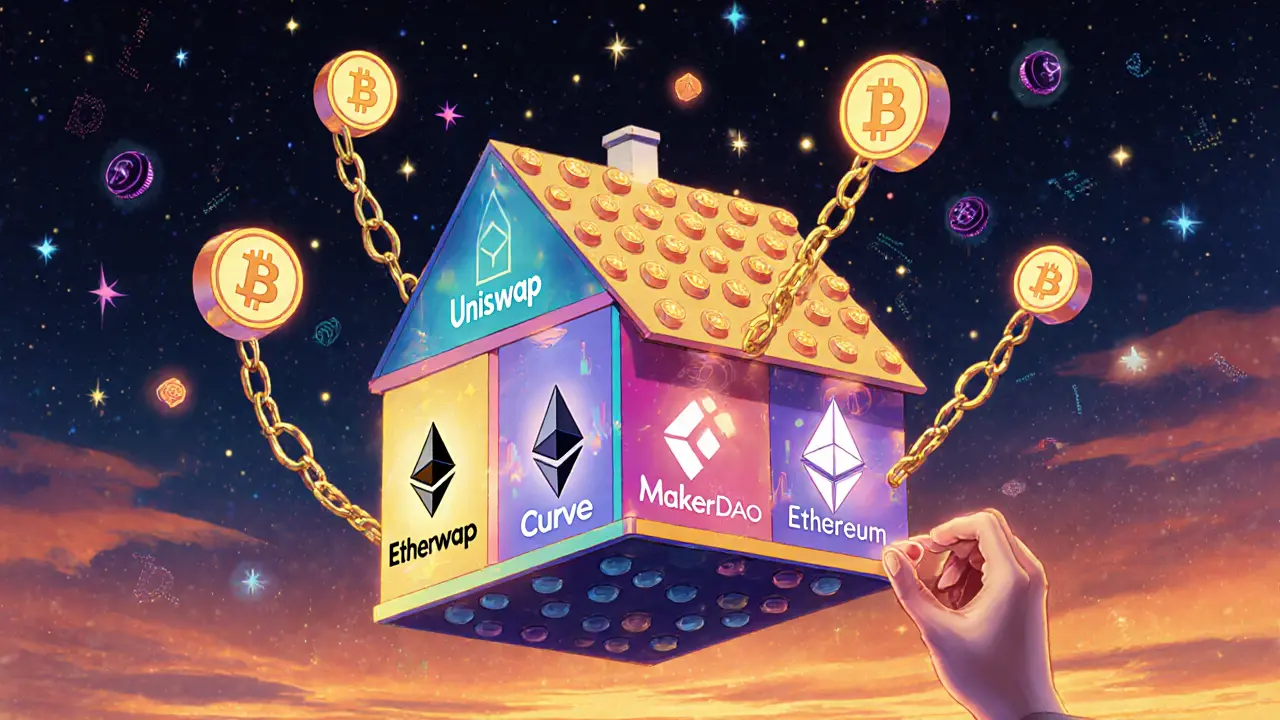DeFi Money Legos: How Composable Finance Is Changing Crypto
When you hear DeFi money legos, modular, interoperable financial components on blockchain that can be combined like building blocks to create complex systems. Also known as composable DeFi, it's what lets one protocol borrow liquidity from another, use collateral from a third, and trigger a trade on a fourth—all in a single transaction. This isn’t science fiction. It’s happening right now on Ethereum and other chains, turning simple smart contracts into financial machines.
Think of it like Lego bricks. One brick is a lending protocol like Aave. Another is a decentralized exchange like Uniswap. A third might be a yield aggregator like Yearn. When you stack them, you don’t just get a tower—you get a self-running money factory. Someone can deposit ETH into Aave, use that as collateral to borrow USDC, swap it for a stablecoin on Uniswap, and auto-deposit it into a yield farm—all without leaving their wallet. That’s the power of composability, the ability of DeFi protocols to interact and build on each other without permission. No bank approvals. No middlemen. Just code.
This isn’t just for traders. It’s reshaping how money moves globally. Protocols that used to be isolated are now parts of larger systems. A token from a gaming project can be used as collateral in a lending pool. A governance token can trigger automated payouts based on market conditions. Even risky meme coins have become raw materials for more serious DeFi experiments. And that’s why you’ll see posts here about Ethereum DeFi, the dominant ecosystem where most money legos are built and connected. It’s not just about Bitcoin or altcoins anymore—it’s about how these pieces fit together.
But there’s a catch. The more pieces you connect, the more things can break. A bug in one contract can crash a chain of others. That’s why you’ll find reviews here of shady projects like MM Finance and Axioma Token—because not every "lego" is safe. Some are plastic knockoffs pretending to be real. The best money legos are open-source, audited, and used by real users—not just hype.
What you’ll find in this collection aren’t just random crypto posts. They’re real-world examples of how DeFi money legos are being built, broken, and rebuilt. From airdrops tied to new DeFi protocols to exchange reviews that expose shaky infrastructure, each piece shows you how the system actually works—warts and all. Whether you’re trying to earn yield, avoid scams, or just understand why your crypto behaves the way it does, these posts give you the tools to see the whole machine, not just the shiny parts.

